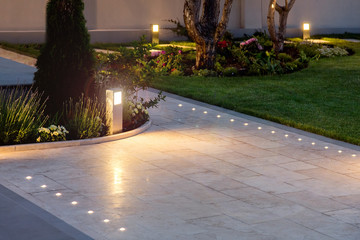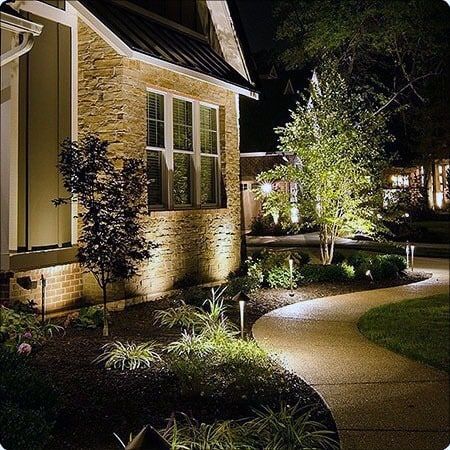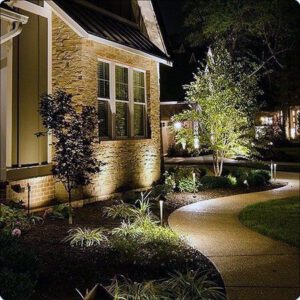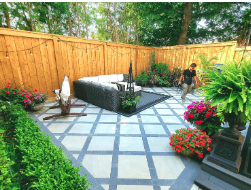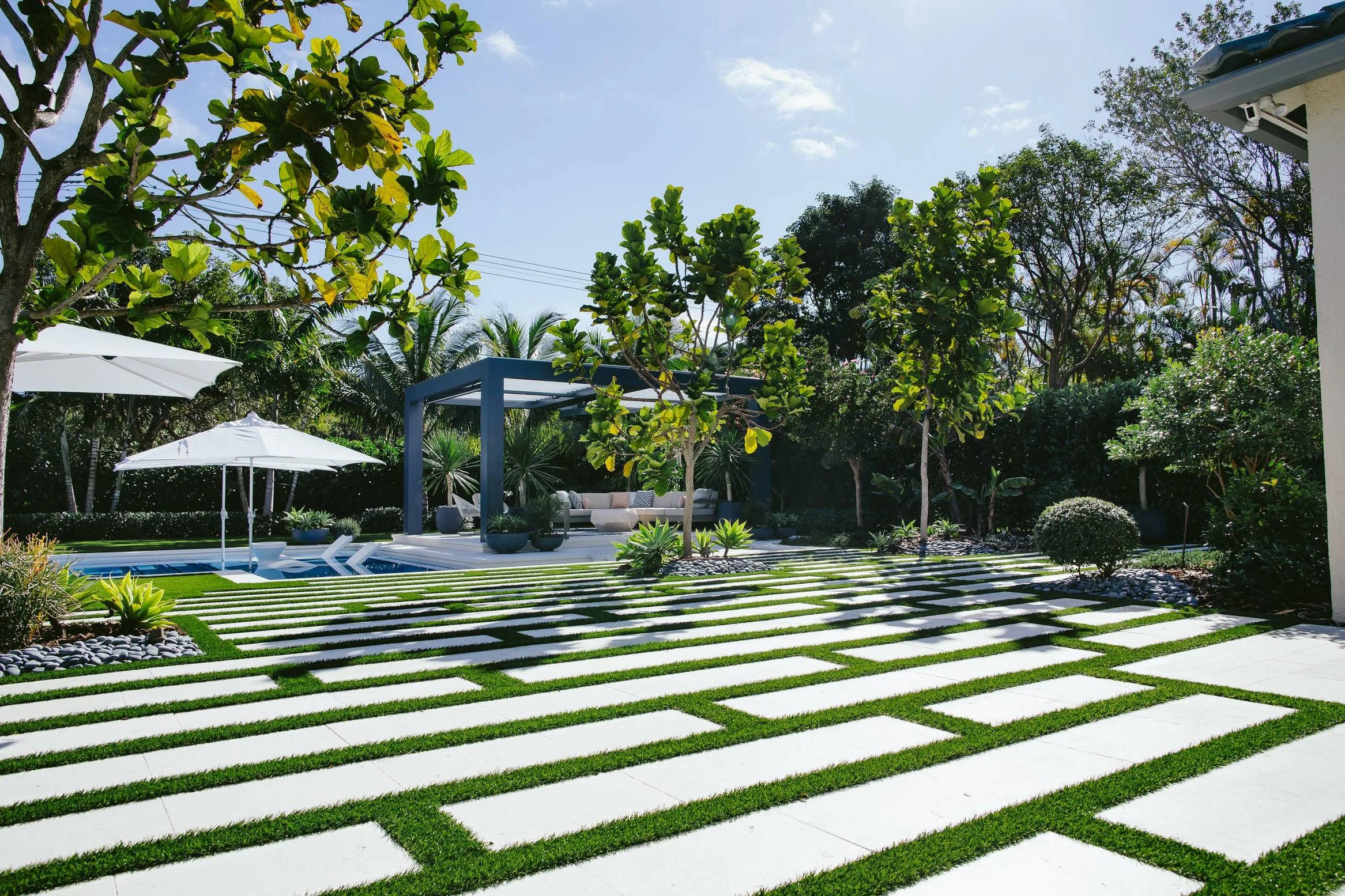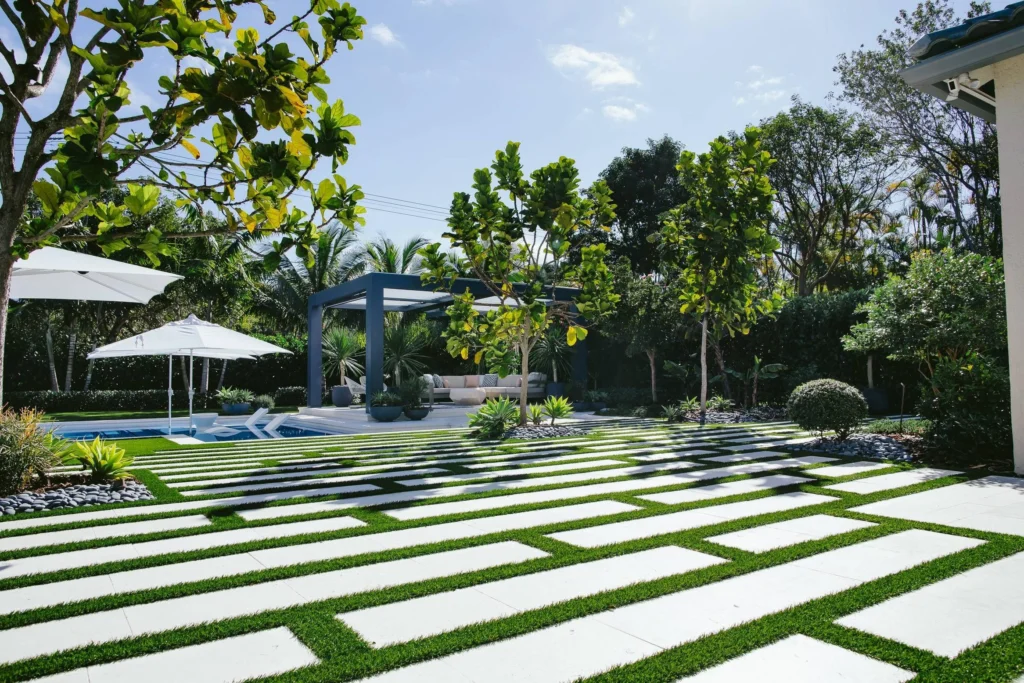Miami Landscape Lighting brings dimension to a yard at night, creating a beautiful and inviting home exterior. It also adds safety and security.
Before installing a new landscape light, test the wires with a multimeter to ensure appropriate voltage. Please follow proper safety precautions when handling a multimeter and test leads.
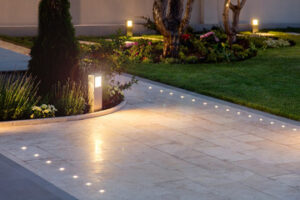
A home’s curb appeal is a key factor in its value. It is what people see first when they visit or pass by. Boosting this is one of the best things you can do to improve your home. It can be done through a variety of methods, including landscaping. Curb appeal landscape lighting is an excellent addition to any property and can be used to draw attention to specific elements of your landscaping. This could include anything from your front steps to a beautiful pond or garden. During the day, these features may not be visible, but when lit, can provide an amazing visual display that will really show off your home.
While the main purpose of any lighting is to illuminate dark areas, landscape lights can also be used to highlight important features of a property. This can help accentuate the beauty of a garden or water feature, and can even add an interesting architectural effect to your home. One technique used by experts is to use lights to silhouette particular landscaping features at night. This could be something as simple as topiary or statues, or it could be an interesting tree or bush. This creates a stunning display that increases the beauty of your home and boosts its curb appeal.
Other landscape features that can be highlighted with lighting are walkways and driveways. These are often overlooked, but can be a great way to increase your property’s overall appeal and make it safer for visitors at night. It can also draw more attention to other attractive features of your landscaping, like the hypnotic pattern of water in a fountain or the intricate detail of a sculpture.
While it is important to have curb appeal, it is also crucial not to go overboard and light everything. Spotlighting every tree, plant, or piece of masonry can quickly become garish and take away from the curb appeal of your home. Instead, opt for a more subtle approach and carefully consider what features of your landscaping are most appealing to you. This could be a particularly pretty frond on a Foxtail Palm or the delicate shape of a tree or shrub.
When a well-designed landscape lighting system is used on a home or commercial property, safety is just as important as curb appeal. Illuminating walkways and other frequently used areas prevents trips and falls that can happen in the dark, especially for guests and deliveries. Properly installed light fixtures can also ward off wildlife, keeping people and pets safe from predators and prey.
When choosing the type of fixture that will best suit your space, be sure to consider the amount of brightness you need and what your desired style is. For example, a flood light is ideal for illuminating the ground or large areas like yards, patios, porches and loading zones, while spotlights shine brightly on specific items or architectural features.
A properly designed lighting system also takes into consideration the impact of glare and light pollution on those using your outdoor spaces. By limiting the beam angle of the fixtures you use and using glare guards, you can reduce the effects of your lights on the surrounding environment.
Another area where lighting can be particularly helpful is with signage and utility areas, helping to keep people on your property safe and prevent them from straying into unsafe zones. It is also important to illuminate areas where ice or snow might be present so people can navigate the grounds with ease and avoid slips, falls and other accidents.
Whether you are lighting the way to your front door for guests or trying to deter nocturnal wildlife, landscape lighting can be a great safety tool. By illuminating the areas around your home or business, you can ensure that everyone who uses your property is safe and able to move about freely in the dark.
It’s always important to take the proper precautions when disconnecting or removing your landscape lighting. Always turn off the power at the main electrical panel and use a voltage tester to make sure that all of the wiring is disconnected from the circuit and is no longer receiving electricity before you begin work. Also, be sure to wear protective gear such as a hard hat and eye protection when working with wires that might contain traces of hazardous materials.
Mood lighting is an excellent way to add a bit of dramatic effect. It can also create a sense of intimacy between you and your guests. It also helps set the tone for your home or business’s branding and atmosphere.
Light has a powerful mood-enhancing impact, not only on our eyes but also on the rest of our bodies. It affects our circadian rhythm and can influence our emotions. For instance, studies have found that blue light can evoke feelings of calm and relaxation, while red can arouse feelings of passion and excitement.
Using the right landscape lights can create the perfect mood for you and your family. Mood lighting is ideal for illuminating key areas of your landscape that draw your attention, like a water feature or beautiful flower garden. You can also use it to set the tone for your outdoor entertainment space. For example, if you have a water feature that is a focal point of your landscape design, you can highlight it with special effects like a lit logo or unique lighting sequence. This will make the water feature a centerpiece of your landscaping design and help draw the eyes of everyone who visits.
The colors you use for your landscape light can also have a powerful mood-enhancing impact. For example, warm colors like red and orange tend to arouse passion and excitement, while cool colors such as blue and green can be calming and soothing. You can even get creative with your mood lighting by adding a touch of color to your landscape with the mirror art pieces. These lights have the ability to change from a solid white to a wide variety of different colors and can even be synchronized with music for a more interactive experience.
Creating the perfect mood with your landscape lighting is a lot like choosing the right decor for your home. You need to consider the functionality of each zone, the overall effect you want to create, and the impact your light will have on your home’s curb appeal. For example, you will need task lighting for your kitchen and walkways, but you will want to balance this with more subtle ambient lighting that sets the scene and creates a comfortable atmosphere without blinding you.
When lighting your home or outdoor entertaining spaces, it’s important to choose fixtures and effects that are both beautiful and functional. A well-designed landscape lighting scheme will satisfy both goals, enhancing your curb appeal and making your yard more usable at night.
Using light levels and beam angles that are consistent across the entire landscape will also create beauty, symmetry, and cohesion. You want the human eye to be able to move seamlessly throughout the space without noticing “black holes” or unbalanced areas. A landscape lighting professional can help you achieve these results with a comprehensive design that includes zoning.
Landscape lighting has many different types and styles, so there’s a lot of room for creativity. For example, up-lighting is an effect that highlights taller trees or structures by pointing the light upwards. This creates a dramatic look with strong shadows and accentuates the shape of the structure or tree. Grazing is another landscape lighting technique that illuminates a wall or trellis with an even, soft glow, drawing attention to the surface and adding depth to a space.
Other types of landscape lighting include deck lights that mount underneath the surface and shine down on seating or dining areas, as well as hardscape lights that are embedded into the pavement or stonework. Some homeowners may prefer to use a combination of these effects to create a unique look for their property.
Finally, when choosing landscape lighting, it’s a good idea to opt for fixtures that are rated for outdoor use. Fixtures not rated for the outdoors may be susceptible to corrosion or damage from humidity and temperature changes. LED landscape lighting is an excellent choice for any outdoor area, as it offers long-lasting brightness and energy efficiency.
If you’re ready to add a new dimension to your Suburban Chicago backyard, it’s time to call a landscaping company to discuss the possibilities for residential landscape lighting. Professionally installed landscape lights will elevate your property’s appearance at night while creating a warm and inviting atmosphere. learn more about the benefits of this effective, hassle-free home upgrade.

